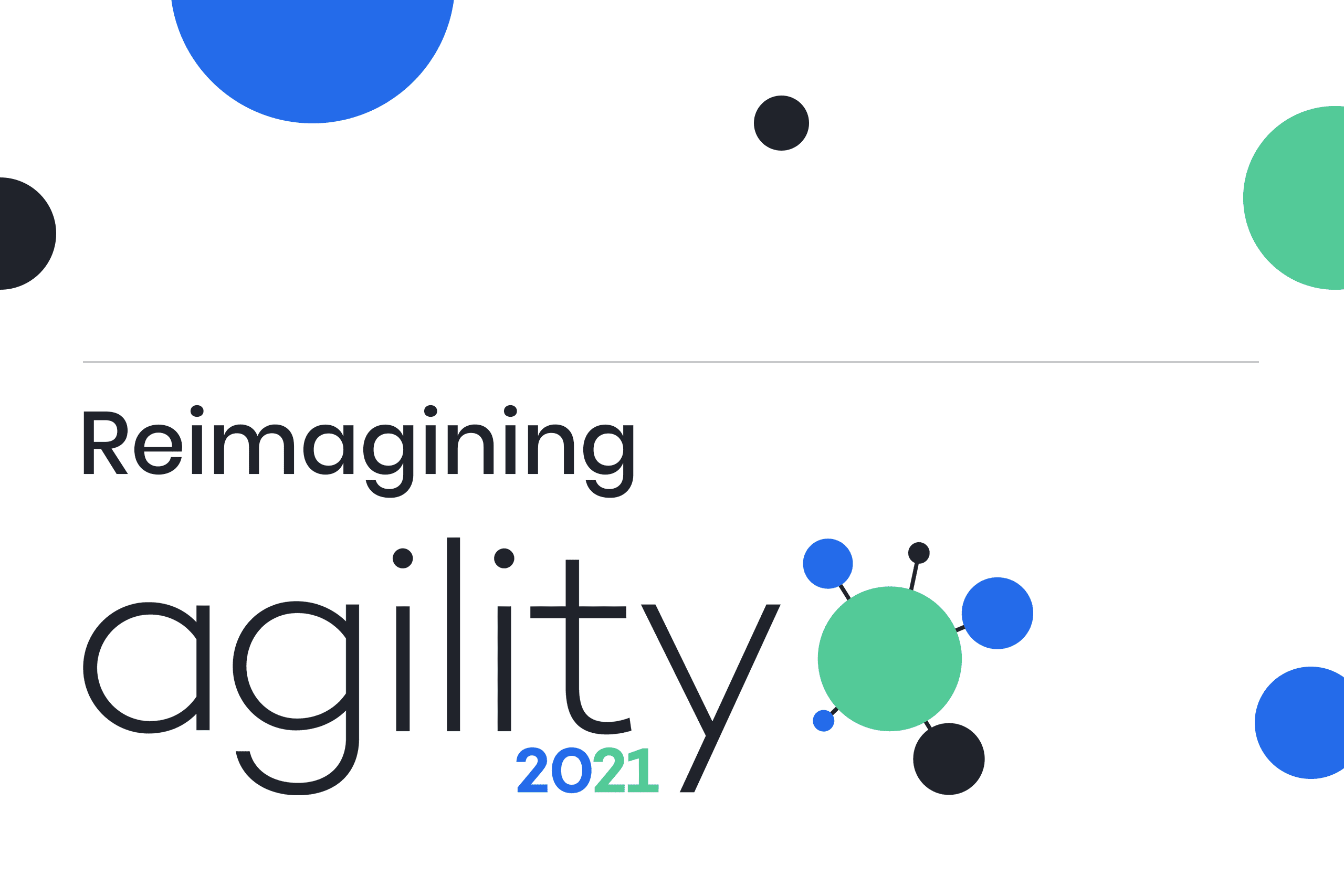Planning a conference takes a LONG time—we started planning for our 2021 customer conference, Agility, in the summer of 2020. I remember thinking back then that people may still be apprehensive about traveling but that COVID-19 would no longer be a public health crisis by September of 2021 (boy, was I wrong!!). We surveyed our customers to better understand their ability and desire to travel and after reviewing their feedback, we decided a hybrid event would best serve the needs of all of our audiences. From the beginning, it was about providing a fantastic experience for our customers, future customers, partners, and the LogicGate team that exceeded their expectations regardless of where they were located.
That meant that we had to plan two whole and distinct experiences: one in person, one virtual. And then make sure there was consistency and cohesion between the two—ambitious and complicated is an understatement!
Many factors were high priority:
- Accommodating the speaker needs and ability to travel had to be top of mind;
- The safety and well-being of the in-person attendees and staff had to be top of mind;
- And pulling it all off in a single time frame would be really difficult.
It would be a huge challenge to pull off, but I knew our team was up for it.
Plan and Plan Again
We worked with our amazing LogicGate events team and meeting planners at our venue (the Swissotel in Chicago) to ensure that the in-person experience provided the right environment for our attendees to learn and network while adhering to the ever-changing guidelines for health and safety. This included everything from serving meals to booking a LOT more meeting space to seat people further apart, having hand sanitizer and masks on-site, and more. I’ve planned many large-scale conferences in my career, and this was more work than I’d ever encountered. We were so proud of it, though, when it all started to come together!
COVID-19 cases in Chicago were down at the beginning of summer, and restrictions had started to ease. We were optimistic about our in-person program until about mid-July. We started tracking the Delta variant more closely and, based on what was happening in other states, suspected that an uptick in cases would mean a return to restrictions we saw earlier in the spring. We worked closely with our venue to determine a go/no-go date for deciding on the in-person event and establishing a Plan “B” if we had to cancel the live experience.
In the end, it was a tough decision. The team had poured their hearts into planning an amazing experience, and we were SO excited at the prospect of celebrating our customers’ success by hosting them for a world-class event. I was pretty emotionally invested in the idea of breaking bread in person with our customers. And when I made the call to cancel the in-person program, I felt a little sick. But we knew it was the right thing to do for our attendees, our employees, and our partners at the Swissotel.
That’s the thing about weighing and evaluating risks—you can’t let emotion dictate your decision-making. It is essential to have a framework for assessing and creating a plan B as part of the overall planning process, while your head is clear and you’re not upset. When we decided, even though we hated it, we were confident it was right because we looked at the framework we’d established months earlier.
Change the Plan, Not the Goal
Pivoting to all-virtual meant that we had to reimagine the whole experience—and we had to do it FAST because our speakers, sponsors, and registrants needed enough notice to change their plans. We established a communications plan based on audience, canceled the venue, set a broader “at home” program that included swag items and virtual networking sessions, and so much more. We had to reduce the number of sessions because we knew that people can’t sit for eight hours in front of their computers the way they can consume eight hours of content at an in-person conference. The team did this over the course of a week. It was a long week, and everyone was exhausted at the end of it. But again, in the end, we were very proud of the work we did and were excited about the new program.
Identifying Smart Risks
In my role as CMO, there are two significant areas of risk. First, the job of Marketing is to know our market, find people who may need our offerings, and communicate with them so they understand how we can help them. This requires lots of data—some of it personal contact data. Our responsibility is to comply with data privacy laws like GDPR and CCPA. Still, a greater responsibility is to treat that data with care and make sure that we only communicate to people who want to hear from us.
The second area of responsibility is in building a healthy, thriving company. As a member of our executive team, my job includes finding new ways of reaching our audiences, evaluating the return on those investments, providing input into our strategic planning process, establishing thresholds for risk tolerance in our contracts, and dealings with third parties—and much more. I manage risk every day, and it’s a privilege to do so, because every great company is built on taking smart risks.
To learn more about LogicGate and our holistic Risk Cloud platform, request a demo or visit us at logicgate.com.

